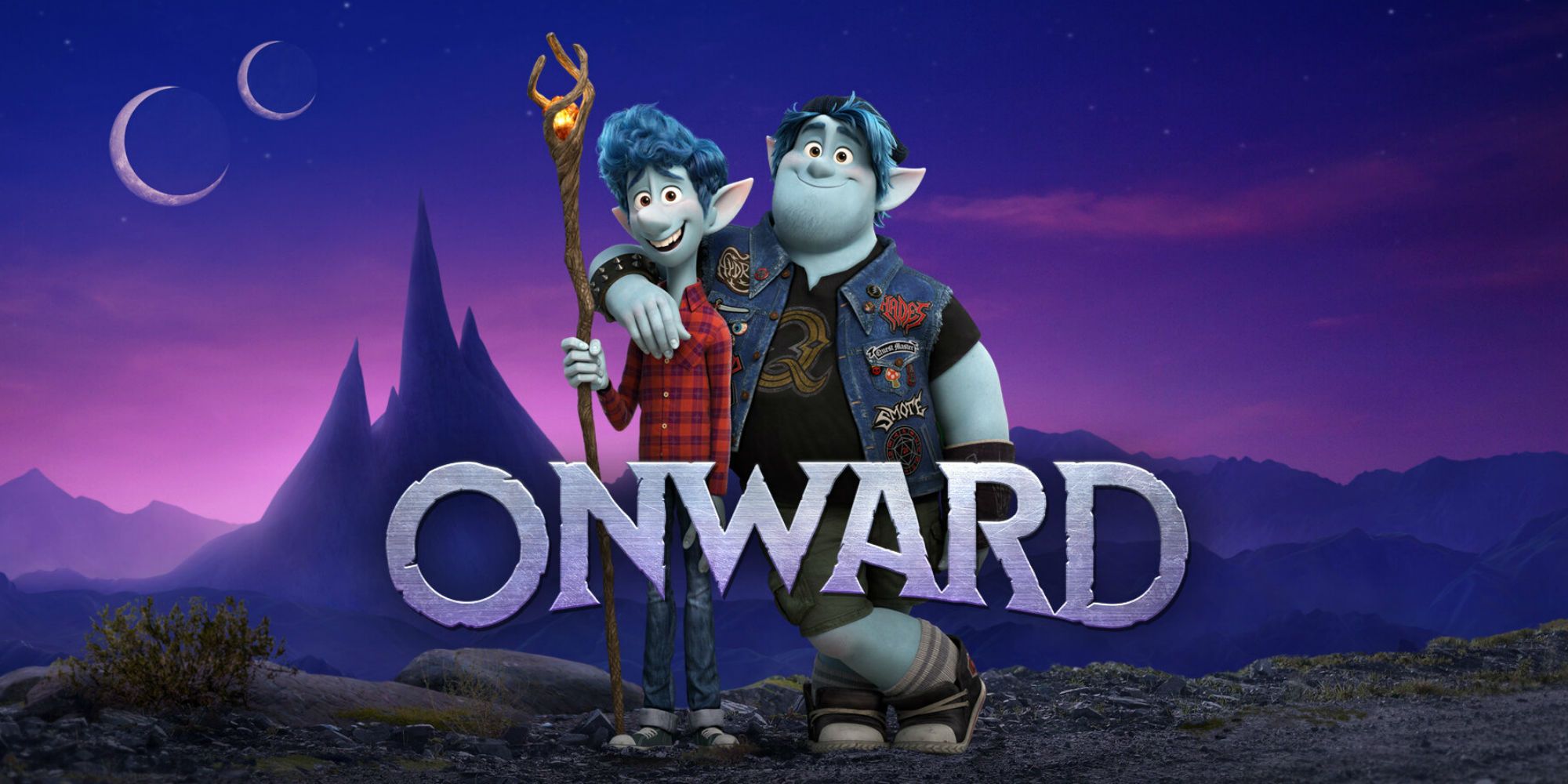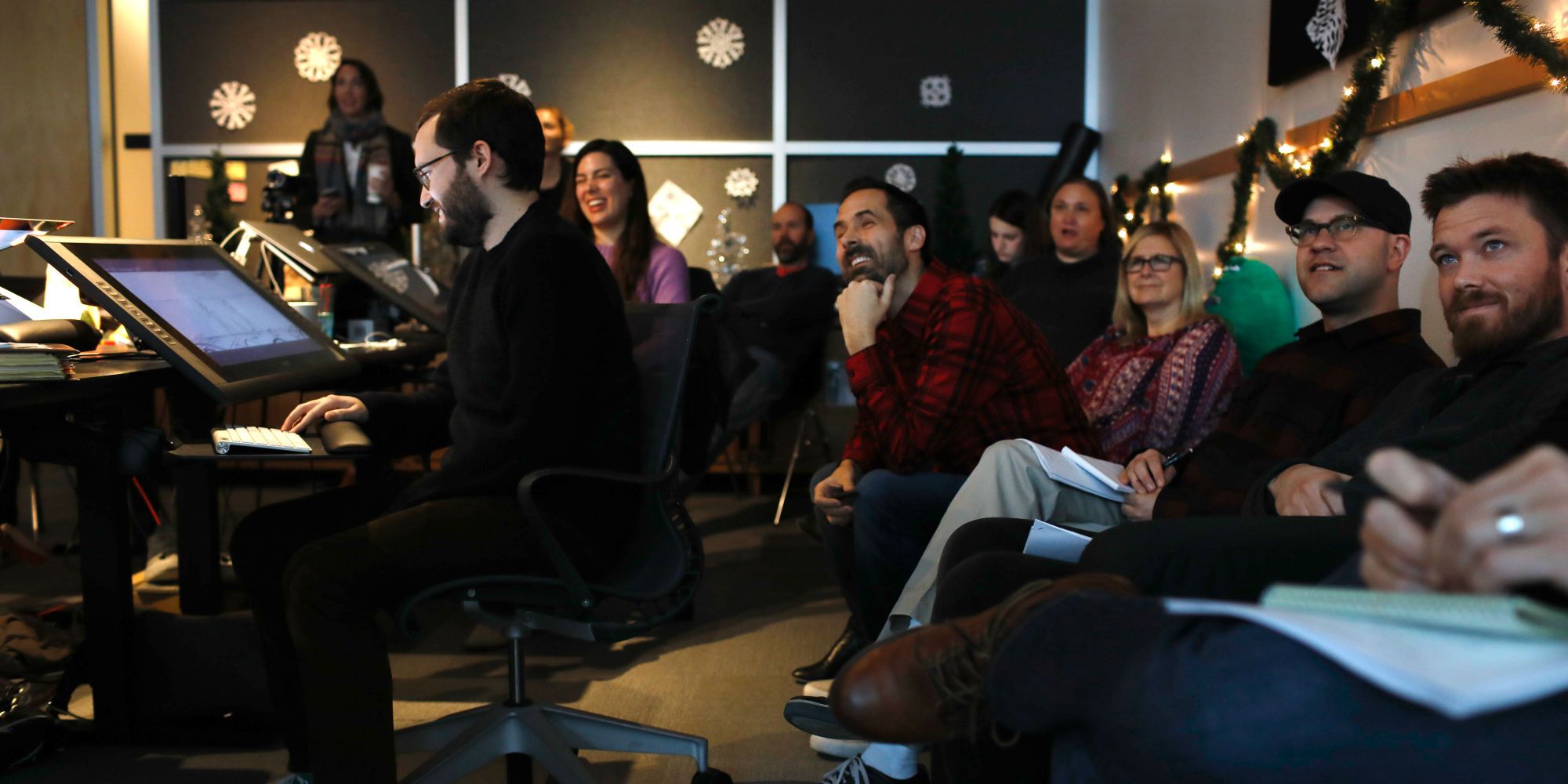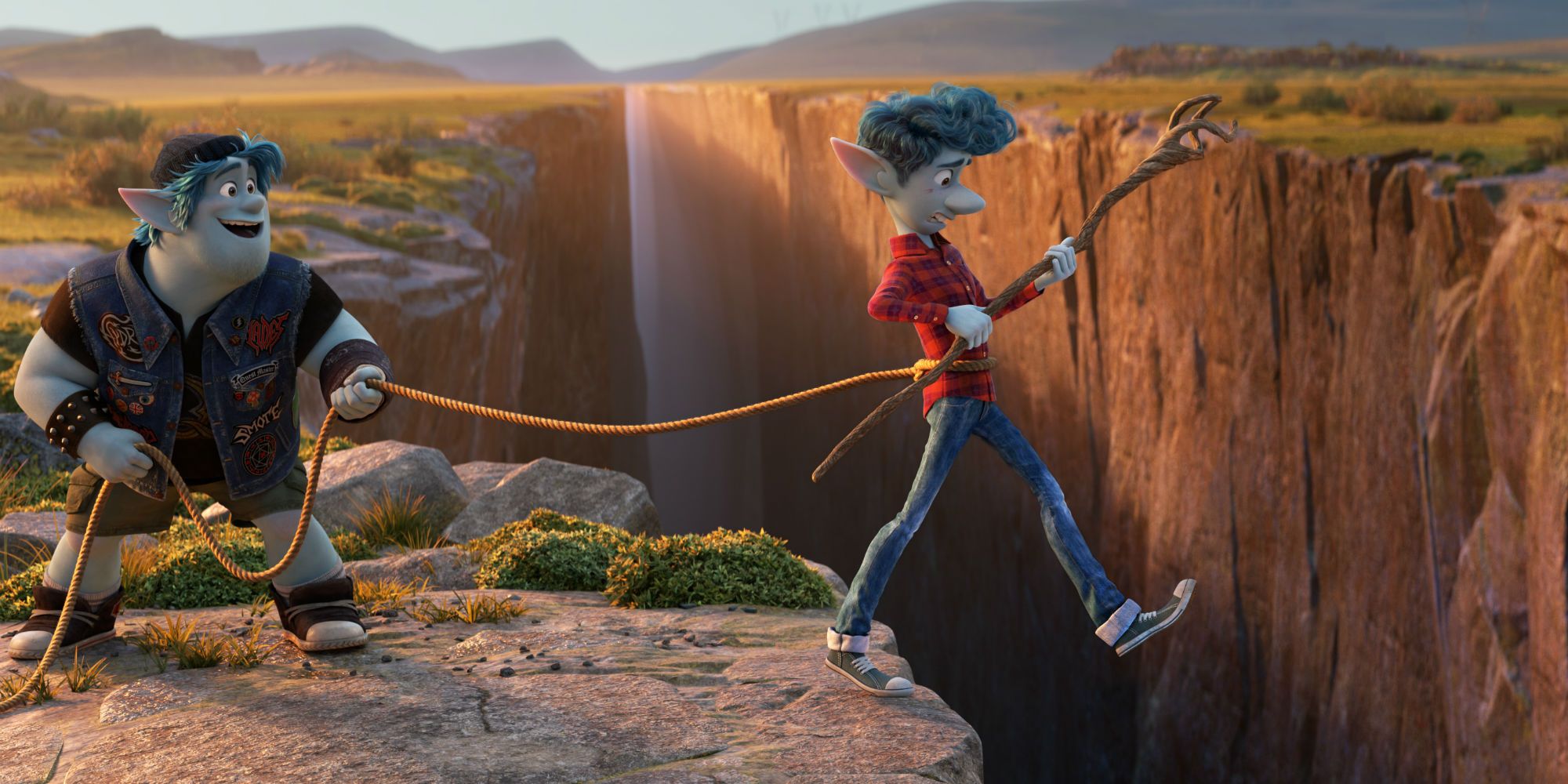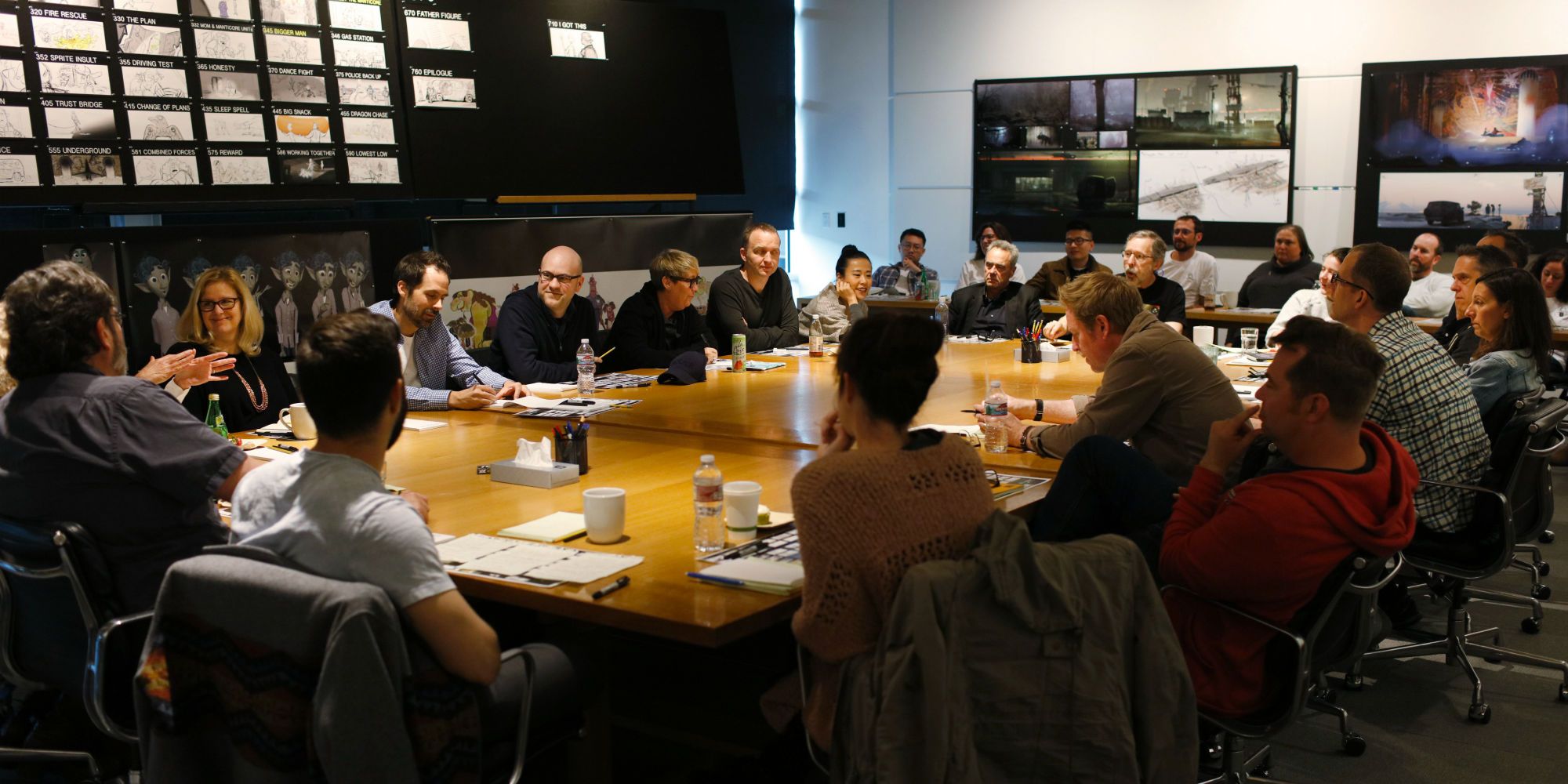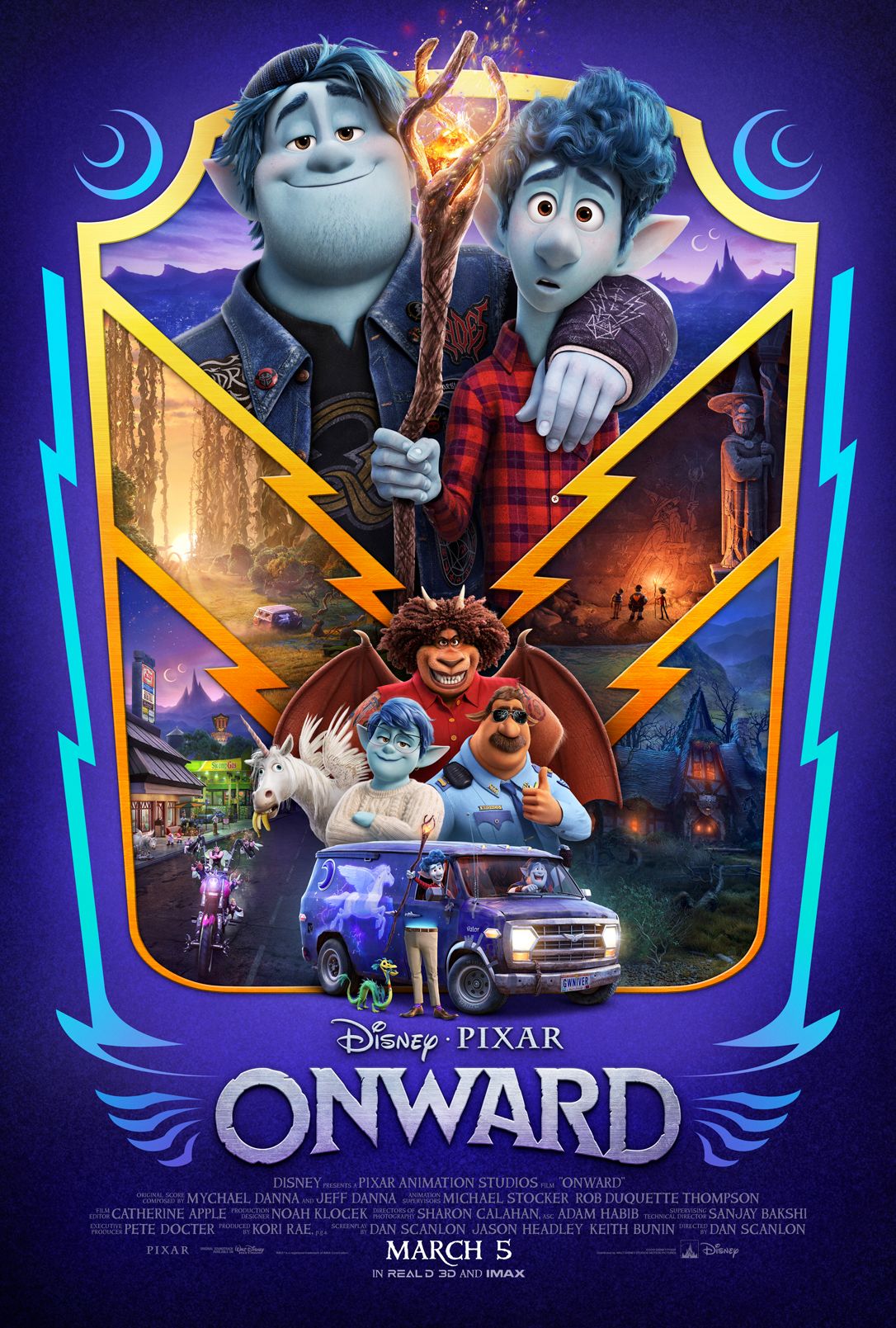Pixar has set a high bar when it comes to storytelling, and Onward's story artists have worked tirelessly to ensure their film meets those standards. Directed by Dan Scanlon (Monsters University) and starring the voices of Tom Holland and Chris Pratt, Onward follows two brothers on a magical mission to spend one more day with their father who passed away when both were very young. It's set in a suburban fantasy world where magic is disappearing as the elves, trolls, and other creatures instead solve their problems with modern technology.
Recently, Pixar has turned to producing sequels to their most popular films (Finding Dory, Incredibles 2, Toy Story 4), but Onward is a new original film. As such, it doesn't have the advantage of a built-in audience and this adds to the pressure for Onward's story team, challenging them to not only create a great film, but one that can proudly stand next to such hits as Wall-E and Up. That high bar is just the reality of making a movie at Pixar, but thankfully, the studio cultivates an incredibly collaborative atmosphere that helps only the best ideas to take root and grow.
Last fall, Screen Rant took part in a press day at Pixar Animation Studios during which Onward's Head of Story, Kelsey Mann, discussed the lengthy process that goes in to developing and fine-tuning the film's story. Animated films take much longer to make than live-action, and Mann shared that day one on Onward was September 17, 2013 - that's more than six years from the start of production to when the film lands in theaters this March! He went on:
"The reason why it's so long ago is that, you know, we spend so long on the story. Which is why I'm there and why we have a story team on so early is because we want, you know, it takes time. We have such a high bar here at Pixar and we want to make sure that the story is not just good, but it's great. And that just takes time. So we've been working on this stuff for a long time. And it starts in the most scary of places, which is a blank story room with all these blank walls. It's so scary, so we have to just start putting something up. I also made Dan, I'm like, 'Hold on, let me take this picture.' He had one sad little card and I go, 'Hold on, hold on, this is great!' Because this is where it begins. It starts with a tiny little idea, a tiny little card on a big blank wall."
Beginning with just that one tiny card on a blank wall, Scanlon, Mann, and the rest of Onward's story team will start to work on bringing the script from page to screen. In animation, this means the storyboarding process, where story artists illustrate how the scenes will play out in the film. "We're trying to replicate that experience of watching the movie," Mann explained, "and we're doing that to see if it's working or not. And how can we make it better?" For Onward, the team created 97,759 storyboards as they worked through Scanlon and Jason Headley's screenplay, but the painstaking process allows them to help each scene reach its full potential. Mann explained how this collaboration can even improve on what was originally scripted, using a scene of Ian and Barley attempting to use magic to cross a bottomless chasm as an example:
“I remember there's that bit where Barley says, like, 'You can't do that, it's only a 15 meter enchanting radius.' I don't know what the line was, but it was something different on the first pass. And Austin Madison, one of our story artists, he plays a lot of role playing games. He was like, whatever Dan and Jason had written wasn't quite right. And so he was like - he was almost like Barley - like, 'It really should be more like 15 meter enchanting radius is the better way to phrase it.' And you go, oh, that's great. Write that down, write that down. And then they'll put that in the script. So I love that, I love that everybody is able to, like, bring something to the film to elevate it.”
Elevating each scene to its best possible version doesn't only apply to dialogue, either. As the story artists are boarding the film, they will constantly tweak scenes to keep the focus where it visually needs to be. "When we make these movies," Mann said, "they're all about the protagonist, who is your main character? They need to be in the driver's seat of their own film, not in the passenger seat." In the case of that scene in Onward where Ian and Barley must cross a bottomless chasm, Mann explained how by shifting the camera's perspective from an overhead angle to one from Ian's point of view, they're able to "put the audience more in the shoes of the main character, so you're experiencing what they're experiencing, so you're hopefully identifying with them a little bit more versus watching them do stuff." The final result, they hope, will have viewers feeling as if they're "on the edge" with Ian and "looking over into the chasm" for themselves.
This fine-tuning of each scene with storyboards is just one step in the process, though, and eventually, more elements are added as the final structure of the film begins to take shape. The storyboards are sent to editorial, who will combine them with scratch or temporary audio, sound effects, music, and begin adding the timing. The assembled cut of the film is then screened in one of Pixar's editorial bays:
"It's a really fun process because there's so much happening all at once. Dan can even do a change to the writing, you know? So it's just more changes, more like music changes, sound effects changes, drawing changes, scratch changes. Find a different take where they're a little angrier, you know? And then we do those changes and watch it again, we do those changes and watch it again, until Dan is happy with the scene and he locks it for the screening. Now we do that for every single scene that's in the movie. So there's about 35 to 40 scenes in each screening. And once every single scene has been locked, then we all gather into the big main theater and we watch it up on the big screen."
When working on any film, Pixar will hold these screenings every three months and they allow for what's called the braintrust - "a collection of really smart story people," according to Mann - to offer their feedback on the film. In the case of Onward, this included such luminaries as Andrew Stanton (Finding Nemo) and Pete Doctor (Inside Out), as well as Pixar's newer talent like Adrian Molina (Coco) and Domee Shii (Bao). It's these braintrust meetings that especially speak to the collaborative spirit at the heart of Pixar because as Mann pointed out, "they all had their own project that they're working on, but they take a break for a day from what they're doing, and they come and they help each other make their project great." Pixar has set the gold standard for today's animated features, and it's thanks to this thorough and collaborative storytelling process that they're able to repeatedly reach the high bar they set for themselves. Audiences can discover if Onward is another of Pixar's hits when it releases this spring.

